Abstract
Objectives
We report a case of recurrent spinal epidural hematoma after total spondylectomy for a metastatic spinal tumor.
Summary of Literature Review
Postoperative epidural hematoma is rare, and no case of delayed epidural hematoma after hematoma removal has been reported.
Materials and Methods
A 74-year-old woman experienced a ninth thoracic vertebral (T9) pathologic fracture caused by a metastatic spinal tumor and underwent total spondylectomy. Immediate postoperative epidural hematoma occurred and neurological symptoms appeared. After hematoma removal, the symptom improved. Ten days after surgery, the neurological symptoms worsened again. Spine magnetic resonance imaging showed delayed epidural hematoma. Hematoma removal was done again.
Conclusions
Delayed hematoma that cause neurological symptoms may occur after primary hematoma removal. If neurological symptoms recur after hematoma removal, the surgeon should consider the possibility of hematoma recurrence. Before total spondylectomy surgery, preoperative embolization is recommended.
REFERENCES
1. Aono H, Ohwada T, Hosono N, et al. Incidence of postoperative symptomatic epidural hematoma in spinal decompression surgery. J Neurosurg Spine. 2011 Aug; 15(2):202–5. DOI: 10.3171/2011.3.SPINE10716. Epub 2011 May 6.

2. Amiri AR, Fouyas IP, Cro S, et al. Postoperative spinal epidural hematoma (SEH): incidence, risk factors, onset. and management.Spine J. 2013 Feb; 13(2):134–40. DOI: 10.1016/j.spinee.2012.10.028. Epub 2012 Dec 5.
3. Kim B, Moon SH, Kim SY, et al. Delayed Spinal Epidural Hematoma after En Block Spondylectomy for Vertebral Ewing's Sarcoma. Asian Spine J. 2010 Dec; 4(2):118–22. DOI: 10.4184/asj.2010.4.2.118. Epub 2010 Nov 24.

4. Uribe J, Moza K, Jimenez O, et al. Delayed postoperative spinal epidural hematomas. Spine J. 2003 Mar; 3(2):125–9. DOI: org/10.1016/S1529-9430 (02)00535-1.

5. Neo M, Sakamoto T, Fujibayashi S, et al. Delayed postoperative spinal epidural hematoma causing tetraplegia: case report. J Neurosurg Spine. 2006 Sep; 5(3):251–3. DOI: 10.3171/spi.2006.5.3.251.
6. Sokolowski MJ, Dolan M, Aminian A, et al. Delayed epidural hematoma after spinal surgery: a report of 4 cases. J Spinal Disord Tech. 2006 Dec; 19(8):603–6. DOI: 10.1097/01.bsd.0000211242.44706.62.

7. Spanier DE, Stambough JL. Delayed postoperative epidural hematoma formation after heparinization in lumbar spinal surgery. J Spinal Disord. 2000 Feb; 13(1):46–9. DOI: 10.1097/00002517-200002000-00010.
8. Awad JN, Kebaish KM, Donigan J, et al. Analysis of the risk factors for the development of ostoperative spinal epidural haematoma. J Bone Joint Surg Br. 2005 Sep; 87(9):1248–52. Doi; 10.1302/0301-620X.87B9.16518.
Fig. 1.
Preoperative magnetic resonance imaging (MRI) scan of the thoracic spine. (A) A T2-weighted sagittal MRI scan shows low signal intensity in the central portion of the T9 body, (B) An enhanced sagittal MRI scan shows well-enhanced findings in the T9 body and adjacent soft tissue. (C) An axial MRI scan shows enhancement in both pedicles.

Fig. 2.
Positron emission tomography computed tomography shows flude-oxyglucose uptake in the T9 vertebra and right iliac bone.
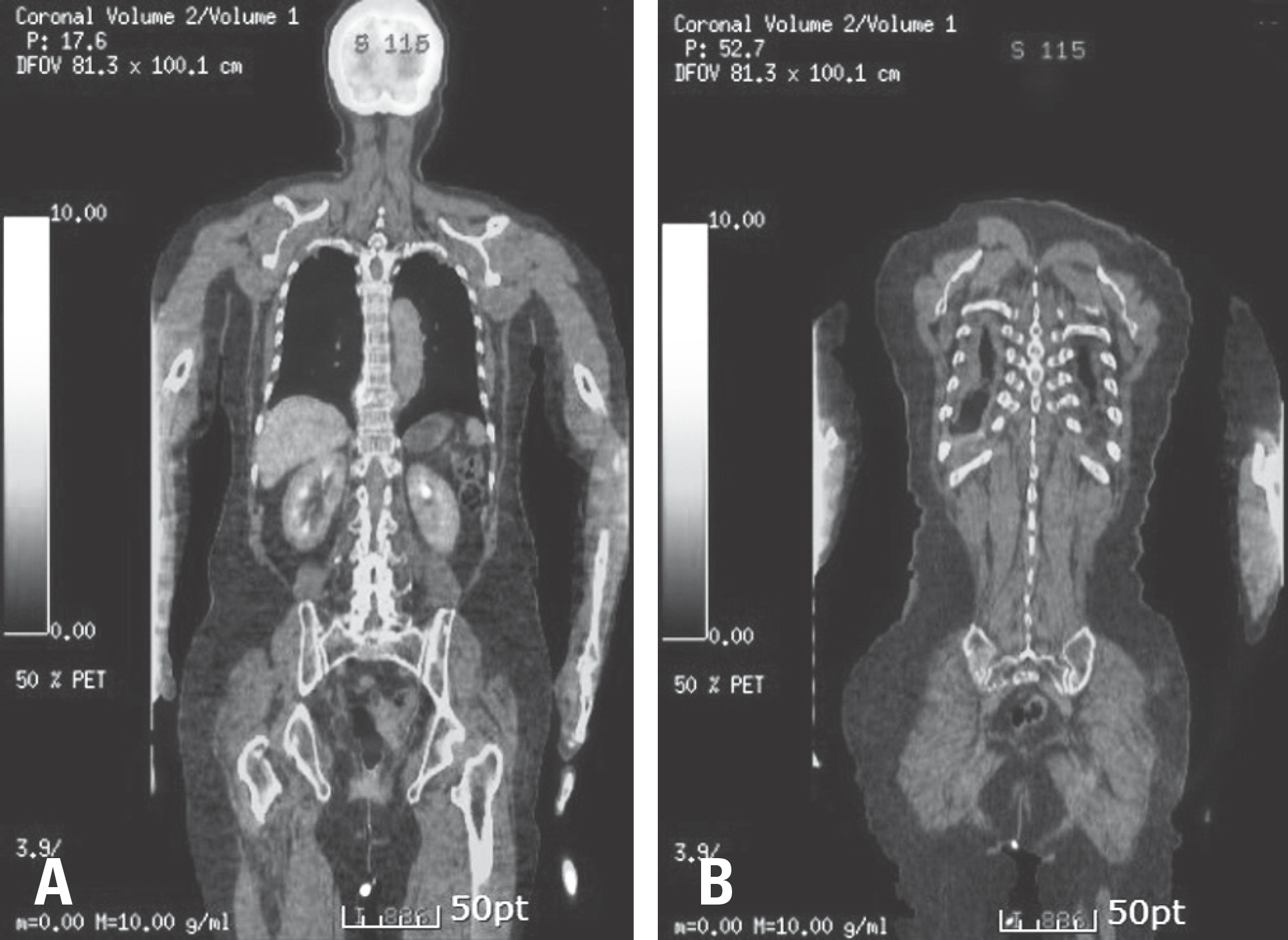
Fig. 4.
Immediate postoperative computed tomography scan. In the sagittal view (A) and axial view (B), the red arrow shows epidural hematoma at the T9 level.
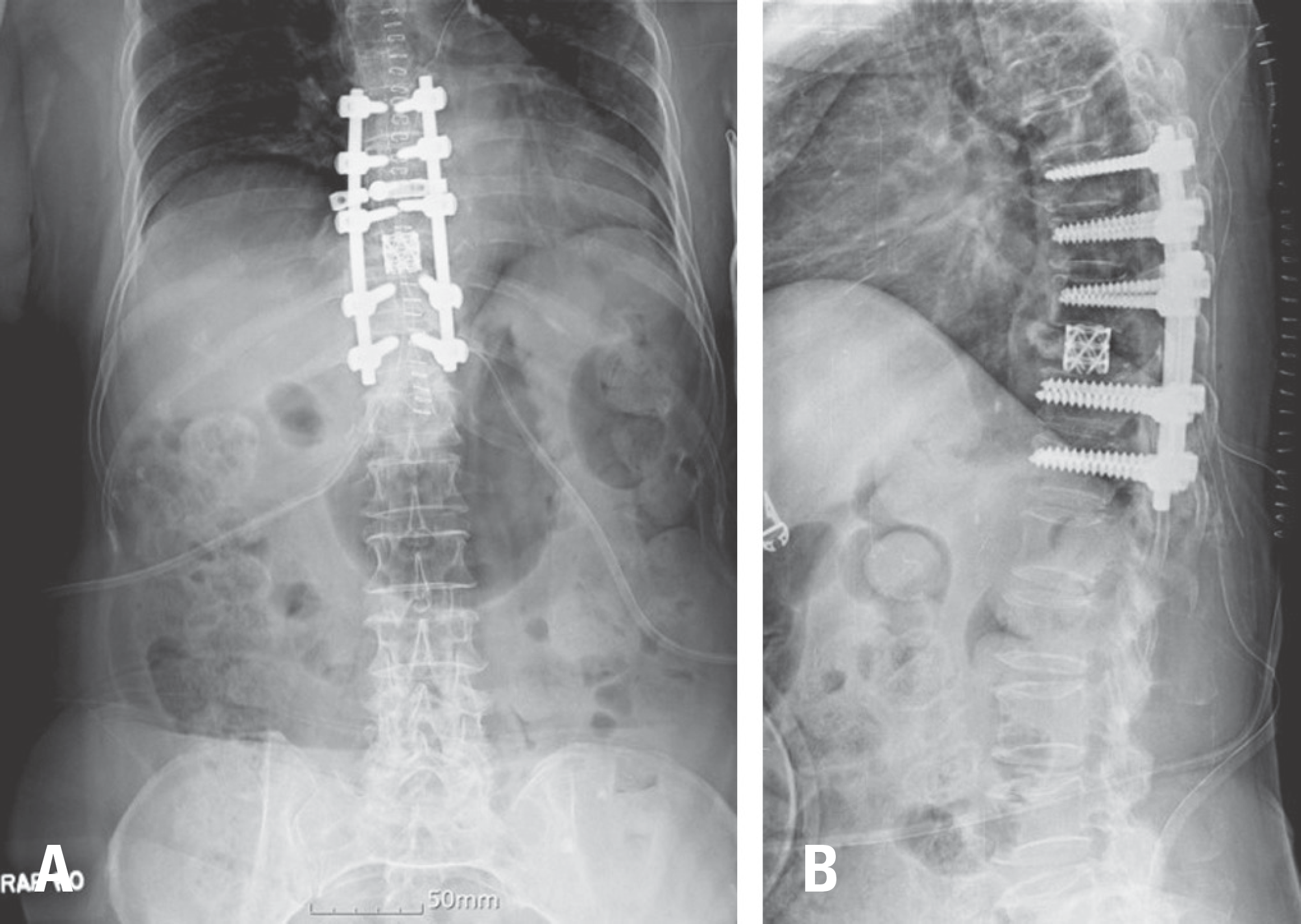
Fig. 3.
Immediate postoperative radiographs. Anteroposterior (A) and lateral (B) radiographs show a stable fixation state.
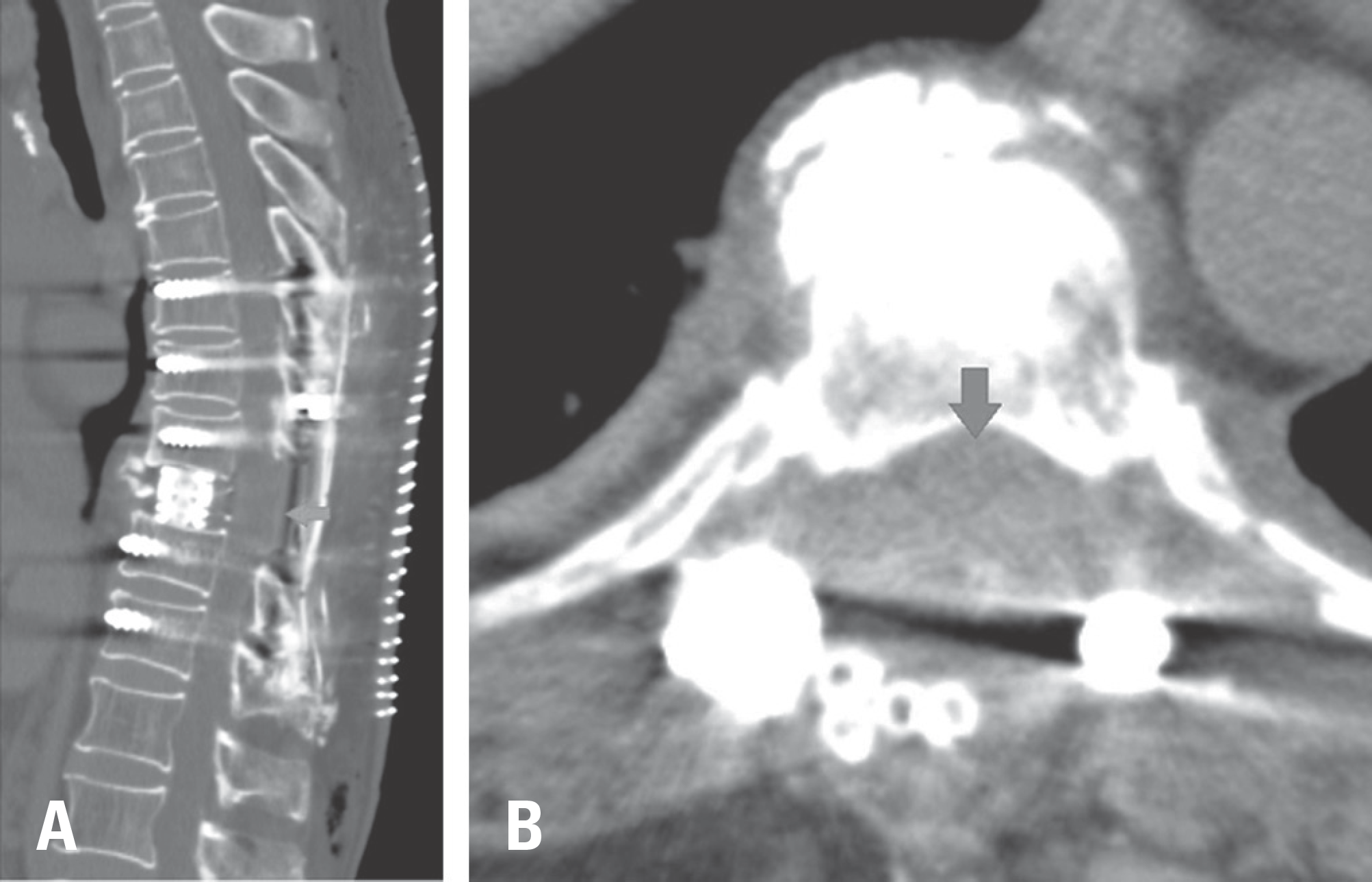
Fig. 5.
Histopathologic findings reveal metastatic follicular carcinoma of the thyroid in a T9 vertebral bone biopsy. On thyroglobulin immunostaining (A), the carcinoma demonstrates a diagnostic primary thyroid immu-no-phenotype with strong thyroglobulin expression, especially within col-loid pools. In hematoxylin and eosin staining (B), multiple scattered dark small spots/follicles are present between the normal-sized follicles.
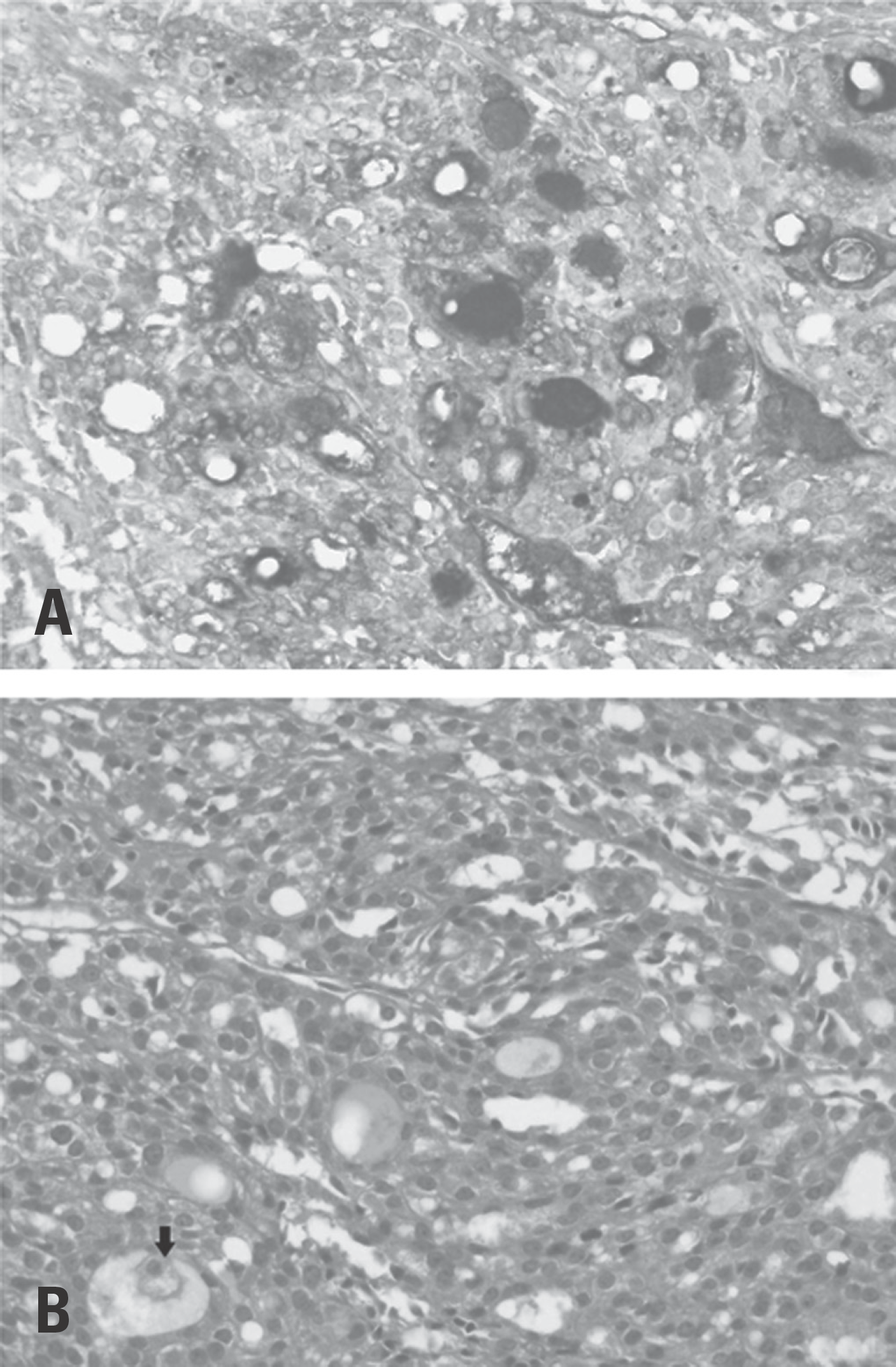




 PDF
PDF Citation
Citation Print
Print


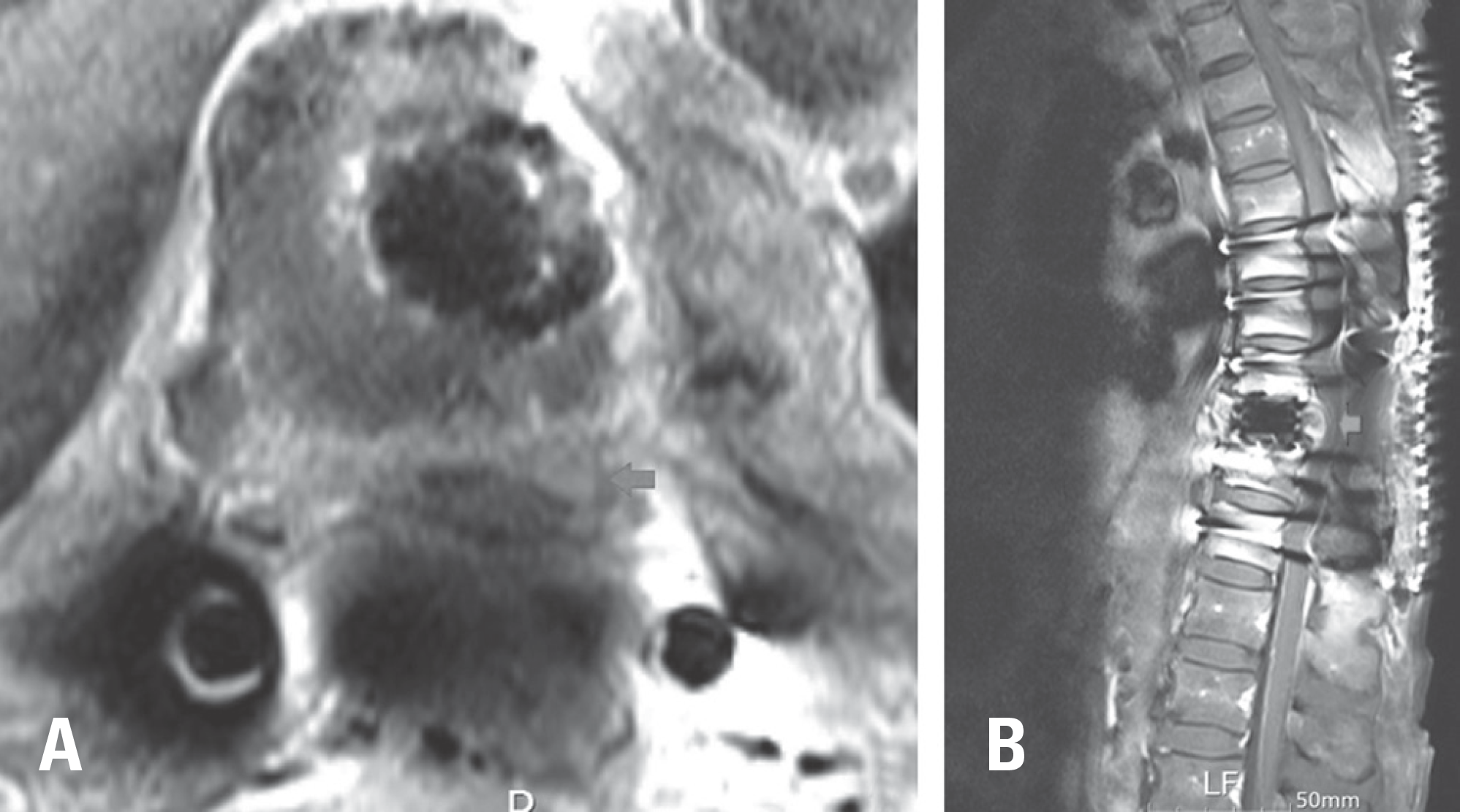
 XML Download
XML Download